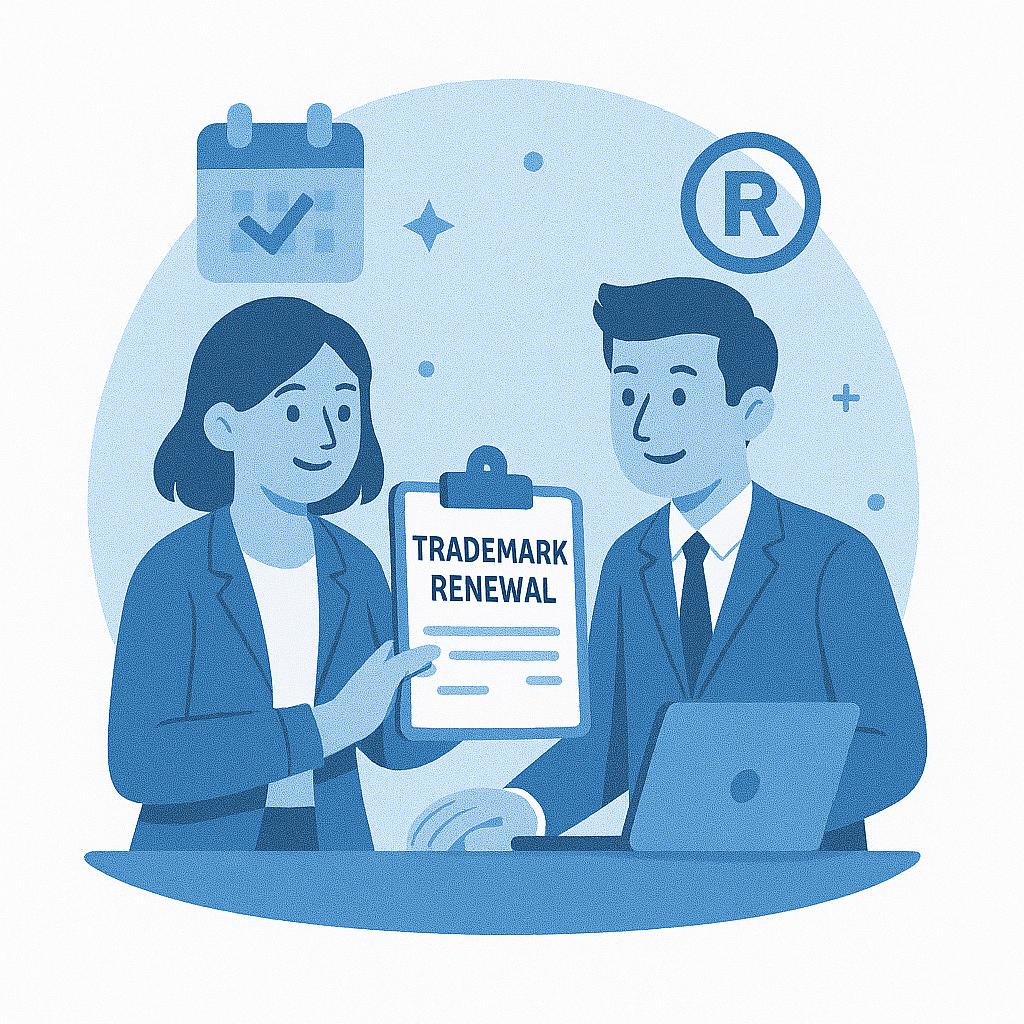
Trademark Renewal in India – Everything You Need to Know
Renew your registered trademark every 10 years to retain exclusive rights and protect your brand. File Form TM-R before expiry (or within the grace period) to continue legal protection and avoid removal from the Register.
What is Trademark Renewal?
A Trademark Renewal extends the validity of a registered trademark for another 10 years. In India a registered mark is valid for 10 years from registration — timely renewal is required to maintain uninterrupted legal protection and enforcement rights.
Why is Renewal Important?
- Retains exclusive ownership and prevents others from registering your mark.
- Maintains the ability to sue for infringement.
- Preserves brand goodwill and commercial value.
- Avoids removal from the Register and the need for restoration procedures.
Documents Required for Trademark Renewal
Essential paperwork & details to file Form TM-R
Form TM-R
Completed renewal application (Form TM-R).
Registration Certificate
Copy of the Trademark Registration Certificate.
Authorization
Power of Attorney (TM-48) if filed through an agent/attorney.
Identity Proof
ID & address proof of the applicant/owner.
Renewal Fee Proof
Payment receipt or evidence of government fee payment.
Benefits of Trademark Renewal
Why renewing matters for your brand
Continuous Legal Protection
Retain exclusive rights and ability to enforce the mark.
Prevents Infringement
Continue to take legal action against unauthorized use.
Indefinite Renewal
Trademark can be renewed indefinitely every 10 years.
Preserve Asset Value
Protects a valuable intangible business asset and goodwill.
Ease of Licensing
Facilitates licensing, franchising and commercial deals.
Market Reputation
Maintains brand recognition and customer trust.
Process of Trademark Renewal in India
Step-by-step guide to file Form TM-R
Check Renewal Due Date
Locate expiry date via IP India portal and plan renewal 6–12 months in advance.
File Form TM-R
Owner or authorized agent files TM-R online at the IP India portal.
Pay Renewal Fee
Pay the prescribed government fee during filing (see fee section).
Registrar Examination
Registrar verifies the application and may seek clarifications.
Issuance of Renewal Certificate
On approval a renewal certificate is issued for another 10 years.
Publication
Renewal is recorded in the Register and published in the Trademark Journal.
Government Fee & Validity
| Form Used | TM-R |
| Validity of Trademark | 10 Years (from date of registration) |
| Renewal Period | Every 10 Years |
| Government Fee (E-filing) | ₹9,000 per class per mark |
| Late Renewal (within 6 months) | ₹9,000 + ₹4,500 late fee |
| Restoration (within 1 year) | ₹9,000 + ₹9,000 restoration fee |
If not renewed within the grace period, restoration may be possible within 1 year of expiry subject to Registrar’s discretion.
Key Points to Remember
- Track renewal date in advance — file 6–12 months before expiry to avoid rush.
- File within 6 months after expiry with late fee; restoration is available within 1 year with higher fees.
- Each trademark/class requires a separate TM-R application and fee.
- Use a professional agent for accurate filing and evidence management.
- Keep renewal certificate safe — it proves ownership continuity for legal and commercial purposes.
Frequently Asked Questions (FAQs)
A trademark is valid for 10 years from the date of registration and can be renewed indefinitely every 10 years.
You can apply anytime within 12 months before expiry or within 6 months after expiry (with late fees).
The trademark will be removed from the Register and you will lose exclusive rights; restoration may be possible within 1 year with extra fees.
Yes — restoration can be sought within 1 year of expiry by paying restoration fees and providing reasons.
Renewal extends validity on time or within grace period; restoration reinstates a mark removed for non-renewal.
Each trademark (and class) requires a separate TM-R form and fee; they cannot be combined in a single filing.
Need Help Renewing Your Trademark?
We handle TM-R filings, fee payments, follow-ups and restoration procedures—ensuring your trademark protection continues without interruption.
Contact Our Experts